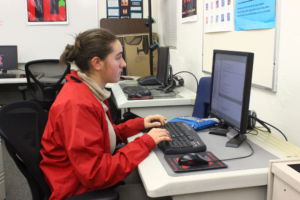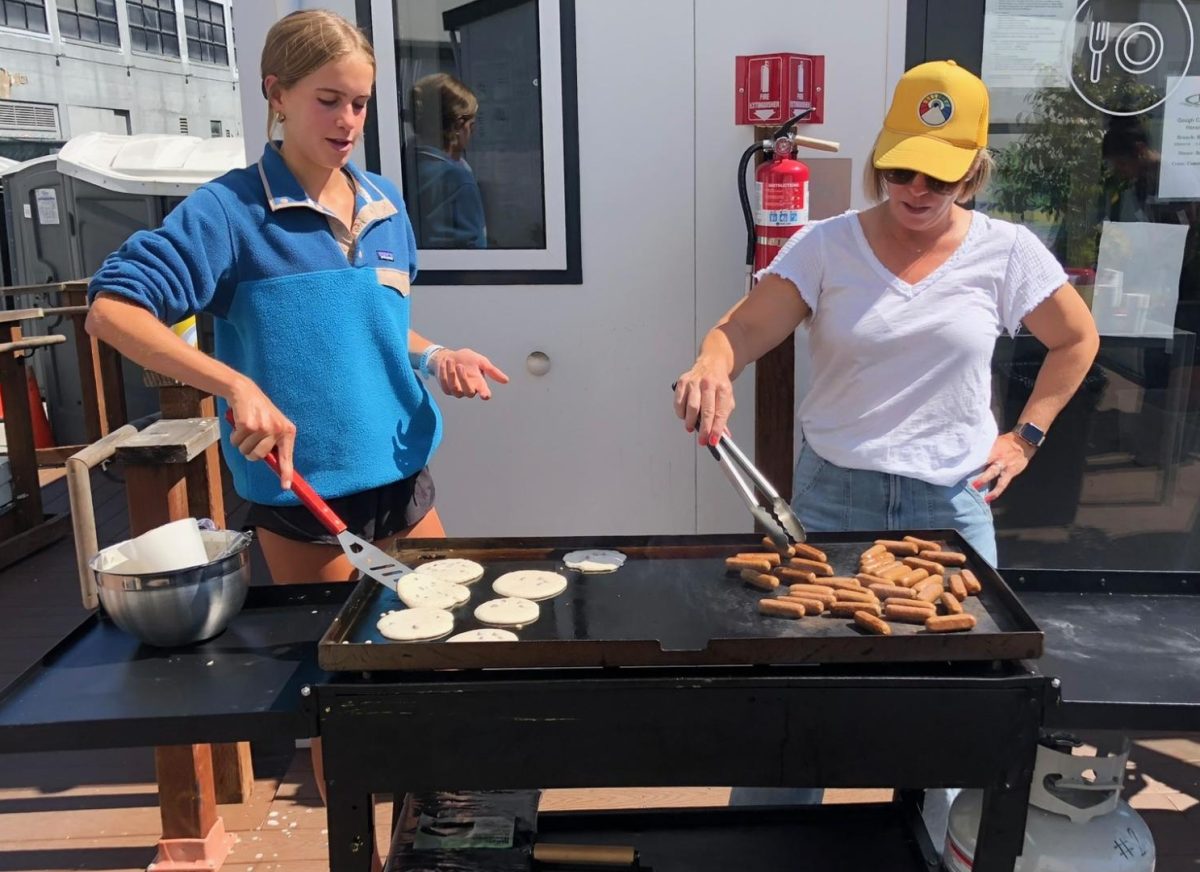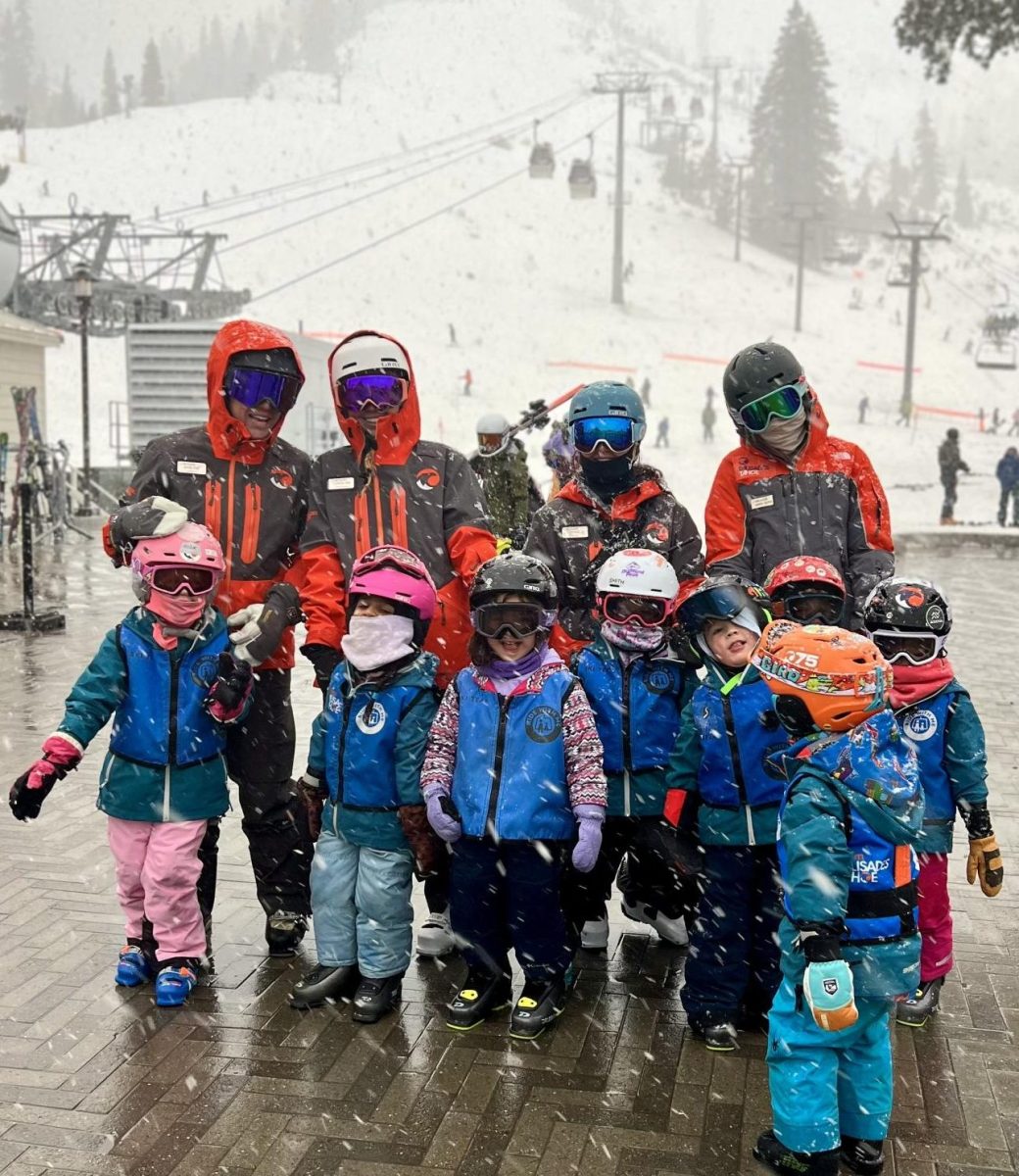“A big part of my interest in [coding] was that I read an article that said there are no girls in AP Computer Science and I said you know what? I’ll be the one,” said sophomore Rivca Chaver, the only girl in the AP Computer Science class.
It is a well-established trend at Redwood that there is an imbalance of the genders in the Computer Programing classes. Computer Programming teacher Dave Goldsmith teaches 60 coding students, only seven of which are girls.
“The fact that this year I have one girl in my AP Computer Programing class is actually really good,” said Goldsmith.
Goldsmith speculates that this disproportion of genders in programing classes is caused by perpetuated stereotypes cultivated in society.
“I think there is this perception that girls perceive [coding] as a ‘guy thing,’ or something too nerdy and technical,” said Goldsmith, who has been teaching the programming class at Redwood for 22 years. “I think some girls think they don’t have or can’t learn the skills to code, which is absurd.”
According to Goldsmith, this gender imbalance is also prevalent due to the district’s lack of tech requirements.
“Our district does not have a tech requirement, which is unfortunate. If you look at where we are in the Bay Area, we are filled with tech companies. Look at where we are as a society: so much [is] done with computers. I’m not saying everyone has to become a coder, but at least expose kids to it,” Goldsmith said.
Even though there is a severe unequal ratio of males to females in technology classes, it doesn’t have a large impact on the learning environment, according to junior Niobe Melendy. Melendy decided to take a programing class because she figured that becoming familiar with computers could greatly benefit her in the future.
“The fact that there aren’t many girls in the class doesn’t really affect the class dynamic. I have been in math classes that have been so much quieter and so much more hostile,” said Melendy, who is currently in her first year of coding.
Chaver originally decided to pursue coding through her older sister, who told her she wished she had taken coding in high school. Chaver recognizes that she has a distinct advantage by being part of a minority in this field.

“I think to some degree there is an advantage. One of my friend’s parents works for Apple, and he says he is always interested in hiring female programmers, but there just aren’t that many of us,” Chaver said.
Chaver thinks that coding will always be a part of her life now, especially as technology is rapidly advancing.
According to Goldsmith, exposing young girls to coding games like Scratch, would increase the amount of girls in programming classes in high school.
Chaver also believes that exposing girls to coding at a young age could greatly increase the number seen in high school programming classes. She plans to go speak to middle schools girls and encourage them to try coding.
Going forward, Goldsmith believes that creating a more balanced class could be solved by counselors pushing the option of taking code classes towards students with gaps in their schedule.
“It is just getting the girls to try the classes. I have boys and girls who try it for a semester and it’s not their thing, but a lot of them really get into it and run with it and love it,” Goldsmith said.
This was the case for junior Sarah Noble, who tried coding for a semester but realised it wasn’t right for her.
“It’s a good skill to have [coding], with technology being so common. I wanted to have that skill to help me in the future. However, it didn’t clicked with me and I found that I didn’t want to pursue it,” said Noble.
Noble said that her decision to stop coding had nothing to do the the classroom environment, as she didn’t feel excluded, but more to do with her own personal understanding of the material. Noble encourages other girls to give programming a try to see if it is right for them.










